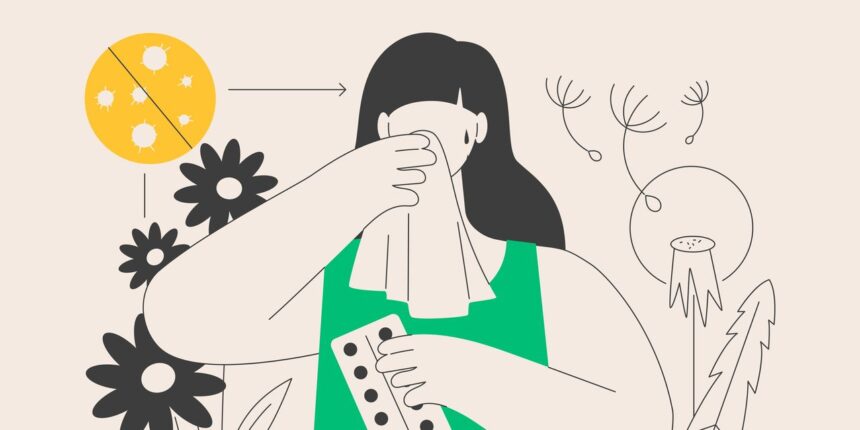You’ll just want to keep a few things in mind before using a Neti Pot. Many of them come with salt packets for making the saltwater solution, but you don’t want to mix them with water straight from the tap; while tap water is totally safe to drink, it can contain some microbes that, when inserted into your nose, may linger in your nasal passages and cause an infection, per the FDA. Instead, use distilled or sterile water, or tap water that you’ve boiled for three to five minutes first and then let cool to lukewarm. (According to the Mayo Clinic, you can also make your own saline mixture for use in a Neti Pot by combining three teaspoons of noniodized salt with one teaspoon of baking soda, and then mixing one teaspoon of that mixture with eight ounces of the distilled, sterile, or pre-boiled water.)
To effectively use a Neti Pot, lean over the sink, tilt your head sideways (ear toward shoulder), and then place the spout of the filled pot into your higher nostril so the fluid seeps out your lower one. Then tilt your head the opposite way, and repeat.
3. Tap the most effective OTC allergy relief drugs.
There are two main categories of OTC drugs often touted by allergists for alleviating allergy symptoms: oral antihistamines and nasal corticosteroids. While both can be effective, solo or together, know that they often take a week or two to kick in, Dr. Oller says, so don’t be discouraged if you don’t feel better straightaway. (This is also why some allergists suggest starting on either or both a week or so before pollen season begins in your area.)
Antihistamines work by defanging histamine, the main chemical responsible for the miserable milieu of allergy symptoms. The first-generation ones, like diphenhydramine (Benadryl), are known to make you drowsy, so much so that they’re used as sleep-inducing agents in some meds. So if your allergy symptoms are keeping you up at night, it makes sense to enlist diphenhydramine, Dr. Bielory says. (You just don’t want to make a regular habit of using an antihistamine to doze off.)
But if you’re looking for daytime relief, you’d be better off taking a second-generation—and non-drowsy—antihistamine like cetirizine (Zyrtec), levocetirizine (Xyzal), loratadine (Claritin), or fexofenadine (Allegra). And if one of these isn’t doing much for you or used to work wonders but seems ineffective now, Dr. Oller suggests swapping it for another one on this list. Perhaps your body has become accustomed or desensitized to your OG choice, and a different drug will spark a better response this season or within your current pollen environment. Just keep in mind, too, that all antihistamines have some potential side effects, Dr. Bielory notes, like dry mouth, dry eyes, and constipation.
Nasal corticosteroids, on the other hand, are meds like fluticasone (Flonase), triamcinolone (Nasocort), and mometasone (Nasonex) that you spritz into your nostrils to specifically relieve a runny or stuffy nose, as well as nasal itchiness or irritation. Rather than blocking histamine, they work by tamping down on inflammation. Just be sure you don’t confuse these nasal steroids with decongestants that also come in the form of nose sprays, like oxymetazoline (Afrin). The latter meds can clear out your nostrils super-fast for immediate relief…but can also trigger rebound congestion if you use them for more than a couple days, Dr. Oller says, potentially leaving your stuffier than you were to start.
Combining a once-daily oral antihistamine with a nasal steroid (spritzed in each nostril up to twice a day) can usually blunt, if not completely knock out, spring allergy symptoms, Dr. Oller says. But if you’re still trudging through each day in an itchy-eyed haze or sniffling through the night, it’s important to make an appointment with an allergist (or your primary care doc, who can refer you). They might recommend a prescription antihistamine or steroid, or immunotherapy, which involves training your body to react less with increasing exposure to the allergen, Dr. Bielory explains, whether via allergy shots or below-the-tongue drops.
But again, if your spring allergies fall in the mild-to-moderate camp, you can likely find relief—and get back to reveling in the warmth and fresh air—by embracing these preventative and therapeutic tactics, well, right about now.
Get more of SELF’s great service journalism delivered right to your inbox.
Read the full article here



